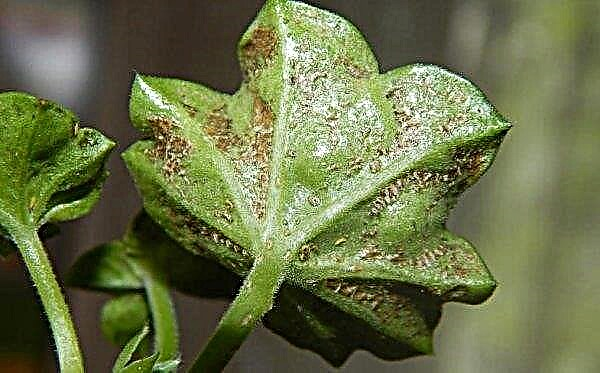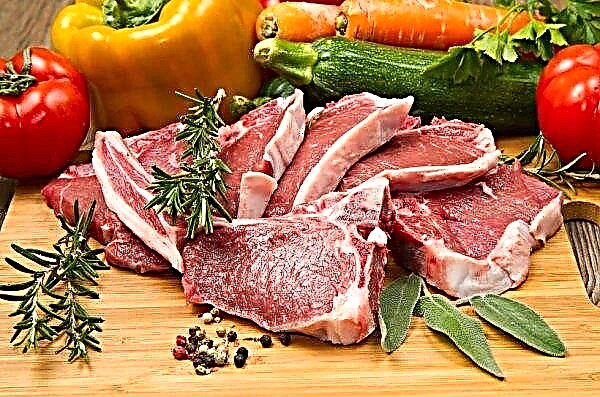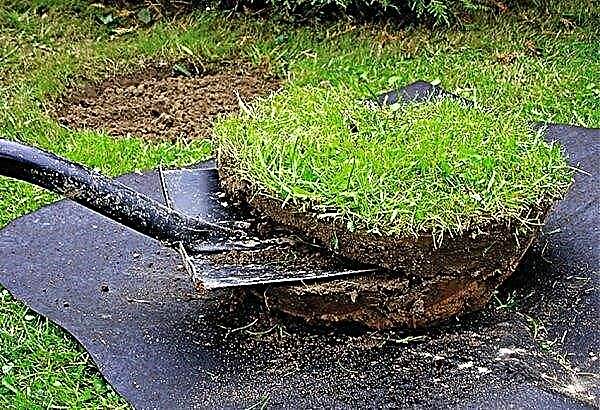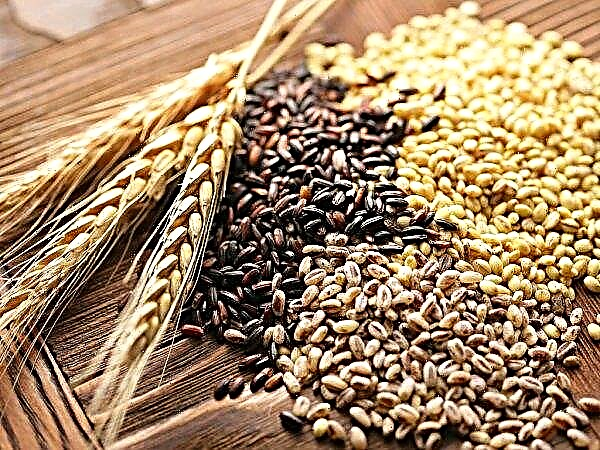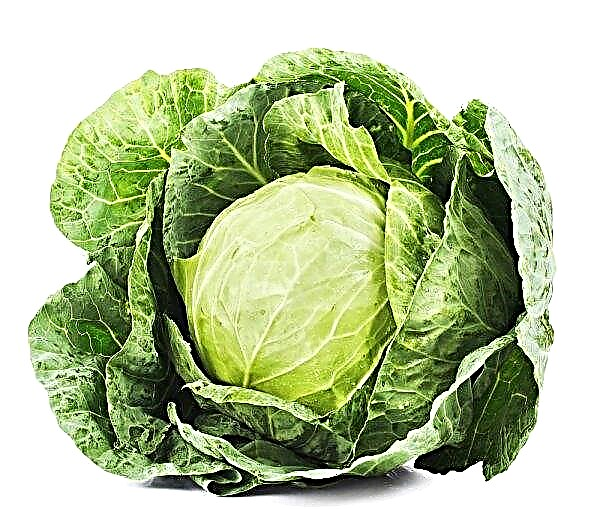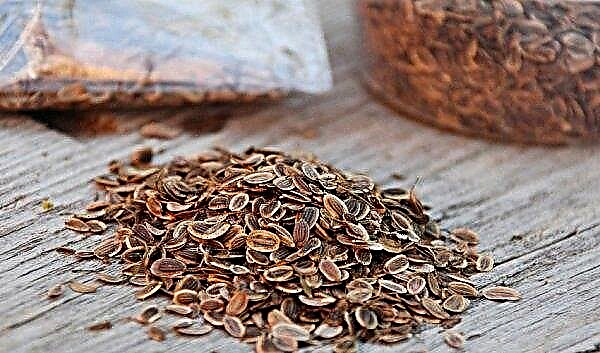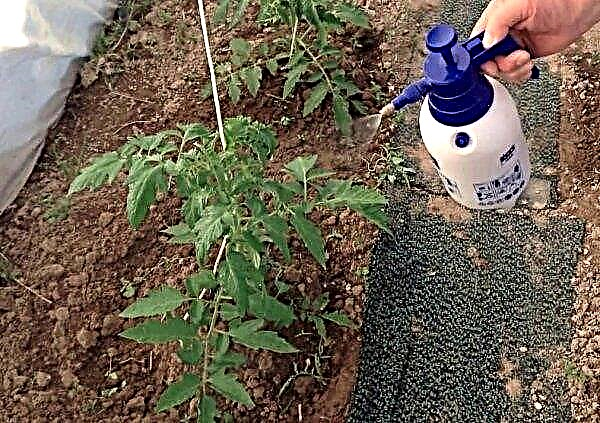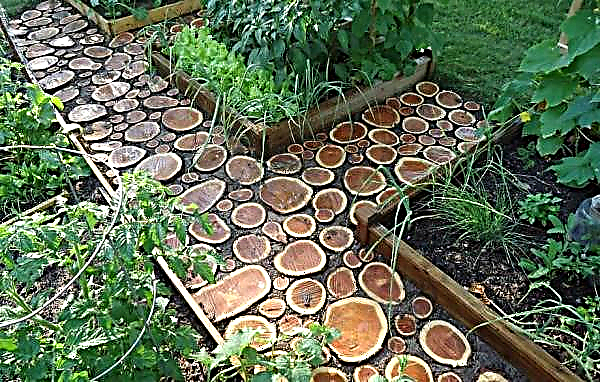Panicled hydrangea attracts many gardeners with large and bright inflorescences, and one of the most beautiful varieties of this plant is the Magic Flame. During flowering, the bush is covered with numerous brushes of flowers that change color over time. A detailed description of the plant, especially its planting and cultivation, as well as ways to use hydrangea in landscape design, are described further in the article.
Grade description
The Latin name for panicled hydrangea of this variety is Hydrangea paniculata Magical Flame. The bush is grown in garden plots of various sizes, and during flowering, the plant becomes a particularly striking decoration of the area.

Botanical Description of Hydrangea Magic Flame:
- The height of the adult bush is 0.9–1.2 m. The width of the crown is from 1.2 to 1.5 m.
- Shoots are strong, weakly branched and erect. They grow in the form of a fan, forming a symmetrical and magnificent crown.
- Young branches are greenish brown and old ones are covered with brownish gray peeling bark.
- The leaves are elongated, with serrated edges and scalp. Their length is 7–10 cm.
- The upper surface of each leaf is painted dark green in summer, and turns red in autumn. The underside of the sheet plate is lighter.
- The plant blooms from July to September. Flowers are formed on the shoots of the current year.
- The inflorescences of the bush have a conical shape and large sizes (up to 12 cm). They contain sterile and fertile flowers in a ratio of 1: 2. Of the latter, after flowering, fruits with seeds are formed.
- Sterile flowers are bright, have the correct shape and diameter of 6-7 cm, located on long pedicels.
- The petals of the flower are first painted white, then gradually become burgundy red, and by the end of flowering they acquire a purple-pink color.

Frost resistance
Panicled Hydrangea Magic Flame is characterized by high frost resistance. Adult plants are able to withstand lowering temperatures to -30 ° C, but young specimens freeze without additional shelter. The variety has been successfully tested, so it can be grown in Europe, in Western Siberia and in the Far East.
Did you know? The Latin name of the flower "hydrangea" comes from the Greek words "hydor" - water and "aggeion" - a vessel, which indicates the increased demands of the plant for soil moisture.
Landing
It is not difficult to plant Hydrangea Flame hydrangea on your own on your own. As a planting material, they use strong young bushes at the age of 2-3 years, bought in a specialized store.

Plants should have a smooth trunk without damage and traces of diseases, as well as a closed root system. Before planting a seedling in the ground, you need to find a suitable place for it on the site, as well as correctly perform the planting procedure.
Site selection and preparation
Hydrangea Magic Flame is unpretentious to growing conditions, so it can be planted in various places in the garden. But so that the bush retains its decorativeness and does not suffer from infections, they select for it an area that meets these requirements:
- location in the sun or in a small partial shade - from constant sunlight the plant burns out, and in full shadow the flowering will be less lush;
- moderately moist, light and acidic soil with a high content of nutrients - in heavy soil, the bush grows worse, often suffers from diseases;
- the absence of groundwater at a depth of less than 1.5 m - from the stagnation of water in the soil, the hydrangea root system rots;
- protection from wind, draft - sharp gusts can break the shoots of the bush, especially in the cold season.

A couple of days before planting, the preparation of the selected site begins. This procedure is performed using the following actions:
- Dig out planting pits with a diameter of about 50 cm. Their depth depends on the size of the root system of the seedling and can be 0.4–0.8 m.
- Mix the soil obtained by digging a hole with peat, humus and sand in a ratio of 2: 2: 1: 1.
- Pour 30 liters of water into each pit. Leave the wells in this form for 1-2 days.
 When planting several bushes of panicled hydrangea between plants, an interval of 1.5–2 m is left.
When planting several bushes of panicled hydrangea between plants, an interval of 1.5–2 m is left.Landing rules
When choosing the timing of planting panicled hydrangea, you need to focus on the peculiarities of the local climate. In the southern regions, you can perform this procedure in late April or early September, and for the northern regions, only spring planting in early May is recommended. The specific date of planting is chosen so that young seedlings can have time to take root before the first frosts and not be affected by spring return frosts.
Important! Hydrangea Magic Flame is immune to harmful impurities and exhaust fumes contained in the air. Therefore, the bush can be used for landscaping streets in large cities.
Step-by-step instructions for planting Hydrangea Magic Flame:
- Before planting, slightly moisten the earthen lump around the roots of the young plant. If the seedling has an open root system, it is necessary to shorten too long shoots and dip the roots in a clay mash.
- Pour a small amount of pre-prepared nutrient soil mixture to the bottom of the planting pit.
- Add 60 g of superphosphate, 25 g of urea and 25 g of potassium sulfate to each well. Mix fertilizer with soil.
- Lower the young plant into the planting pit. The root neck should be at the same level with the soil surface.
- Fill the hole to the very top with the remains of fertile soil. Tamp lightly with his hands, forming a small area of the trunk circle.
- Pour plenty of warm water over the bush. Shorten the annual shoots, leaving 6-10 buds on them.
- When the liquid is completely absorbed, mulch the trunk circle with compost or peat.

Care Features
Hydrangea Magic Flame may grow well even with minimal care, but for lush flowering, the bush needs enough water and fertilizer. Especially carefully you need to monitor the condition of the soil around young seedlings that have not yet had time to grow stronger.
To plant served as a decoration of the site and had a crown of the correct form, perform annual pruning of shoots. The main points of crop care are listed below.
Watering
Adequate amount of water is needed for normal growth and lush flowering of panicled hydrangea, therefore, proper watering is of key importance in caring for the plant.
Key recommendations for bush irrigation:
- during heat and drought, watering is performed every 3-4 days, and in moderately warm weather - once a week;
- 25-30 l of water is consumed per 1 m of area;
- liquid is poured under the root of the plant, avoiding drops falling on leaves and flowers - this can cause a sunburn of the plant;
- for irrigation hydrangeas use rain or standing water without chlorine.
Fertilizer and fertilizer
Not only the duration of panicle hydrangea flowering and the decorative appearance of inflorescences, but also the state of plant immunity depends on the presence of nutrients in the soil. However, it is not worth abusing with top dressing - with their overabundance, shoots of the bush can break under the weight of numerous large brushes of flowers.
Basic rules for fertilizing:
- The first top dressing is made only the next year after planting.
- During the active growth of young shoots, the bush is watered with 20 liters of a solution prepared from 20 liters of water and 40 g of urea.
- At the stage of bud formation, a solution is prepared for each plant from 65 g of potassium sulfide, 35 g of superphosphate and 10 l of water - it is applied 2 times with an interval of 2 weeks.
- At the end of summer, a mullein infusion made from 1 part of manure and 3 parts of water is introduced, and the resulting concentrate is diluted with pure water in a proportion of 1:10 and watered hydrangea.
Pruning
Hydrangea of this variety tolerates pruning, which is necessary to maintain a neat crown shape and the formation of a large number of inflorescences.
The basic rules of the procedure:
- the first time the bush is trimmed after it reaches the age of 4-5 years;
- in the early spring and autumn, dry and damaged branches are removed;
- in March, formative pruning is performed - 5-10 strongest branches are distinguished on each bush, and then they are shortened to 3-5 buds;
- if necessary, thinning pruning is carried out in the spring - small branches that grow too close to each other or inside the crown are removed;
- dried inflorescences must be removed at the beginning of autumn, so that snow does not accumulate on them, breaking the shoots of the plant;
- at the end of September, a rejuvenating haircut is carried out - old shoots are cut off under the root, leaving hemp about 5 cm high above the ground.
Video: Trimming panicled hydrangea
Winter preparations
Hydrangea Magic Flame tolerates winter well when grown in regions with a not very harsh climate. But so that the roots and shoots of the plant do not suffer from frost, it is necessary to properly prepare the bush for cold weather.
Important! Shelters are removed from young seedlings only in the spring, after the probability of night frost disappears.
To do this, perform the following actions:
- at the end of September, water-charging irrigation is carried out - 7-10 buckets of water are poured under each bush;
- the area of the trunk circle is sprinkled with a layer of mulch about 20-30 cm thick - use dry leaves, peat or rotted manure for this;
- stakes are driven in around young seedlings, and then the resulting frame is tied with branches of spruce branches and covered with spanbond;
- Shelters are built around adult bushes only if the air temperature in winter drops below -30 ° C.
 1- tilted shoots, 2 -cocking, 3- spruce branches, 4- lutrasil, 5- stone
1- tilted shoots, 2 -cocking, 3- spruce branches, 4- lutrasil, 5- stone
Diseases and Pests
Subject to all the above rules for planting and care, Hydrangea Magic Flame shows good immunity and almost never suffers from diseases and pests.
But if the gardener made mistakes during the cultivation, such problems may appear:
- Powdery Mildew The main sign of infection is yellow-green spots on the surface of the leaves, which eventually turn brown. A characteristic plaque of gray or purple appears on the back of the sheet plate. The leaves dry out, the shoots are deformed and the hydrangea dies. For treatment using the drug "Fitosporin" or Bordeaux liquid (100 g of funds per 1 bucket of water).
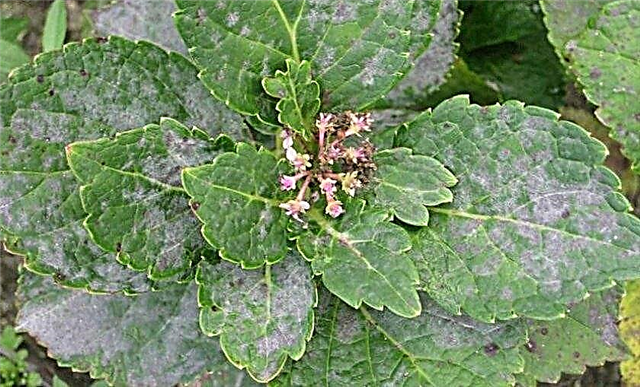
- White rot. First of all, the infection affects the root system, causing it to rot. In this case, a white coating with small black spots appears on the stems and leaves. In the future, the shoots become brown and die, and the bush may die. For treatment, a solution of Fitosporin is used, using it according to the instructions indicated on the package.

- Gray rot. Infection affects the ground part of the bush. Gray watery spots appear on branches and leaves. In dry weather, they dry out and die, forming through holes, and with increased humidity cause decay of damaged areas. For the treatment of gray rot, “Fundazole” is used, having previously destroyed all the affected areas of the bush.

- Spider mite. The insect eats the juice of stems and leaves, as a result of which the ground part of the plant turns yellow and dries. A sign of infection is the appearance of a cobweb and marble pattern on the surface of the sheet plate. For effective treatment, special drugs are used (for example, the insecticide “Acarin”).

- Aphid. Pests are concentrated on the shoots and at the base of the leaves of the bush. They not only suck out all the juices from hydrangea, but they are also carriers of dangerous viral diseases that cannot be treated. To kill insects, hydrangea is sprayed with tincture of garlic with an interval of 1 time in 7 days (250 g of garlic and 50 g of laundry soap grated on 1 bucket of water).

To prevent the occurrence of these problems, it is recommended that the following preventive measures be taken:
- use high-quality planting material;
- comply with the watering and feeding schedule;
- destroy weeds in the area of the trunk circle;
- loosen and mulch the soil around the bush;
- to trim;
- observe the distance between plants when planting.

Use in landscape design
Due to its beautiful appearance and unpretentiousness in care, the lush bushes of panicled Hydrangea Magic Flame are widely used in the design of garden plots.
Did you know? In Japan, hydrangea is called "adzisai", which means "purple sunny flower."
The main ways to use the plant in landscape design:
- for single landings as an independent decorative element;
- in combination with other flowering plants and shrubs;
- for the design of mixborders consisting of several tiers of ornamental plants;
- as a constituent element of a hedge;
- for the design of flower beds in the shaded part of the garden.

Panicled Hydrangea Magic Flame is grown in large and small garden areas, and even an inexperienced gardener can cope with planting and caring for the bush. Using the recommendations listed in the article, you can get a decorative plant that will annually delight the eye with its lush flowering.






